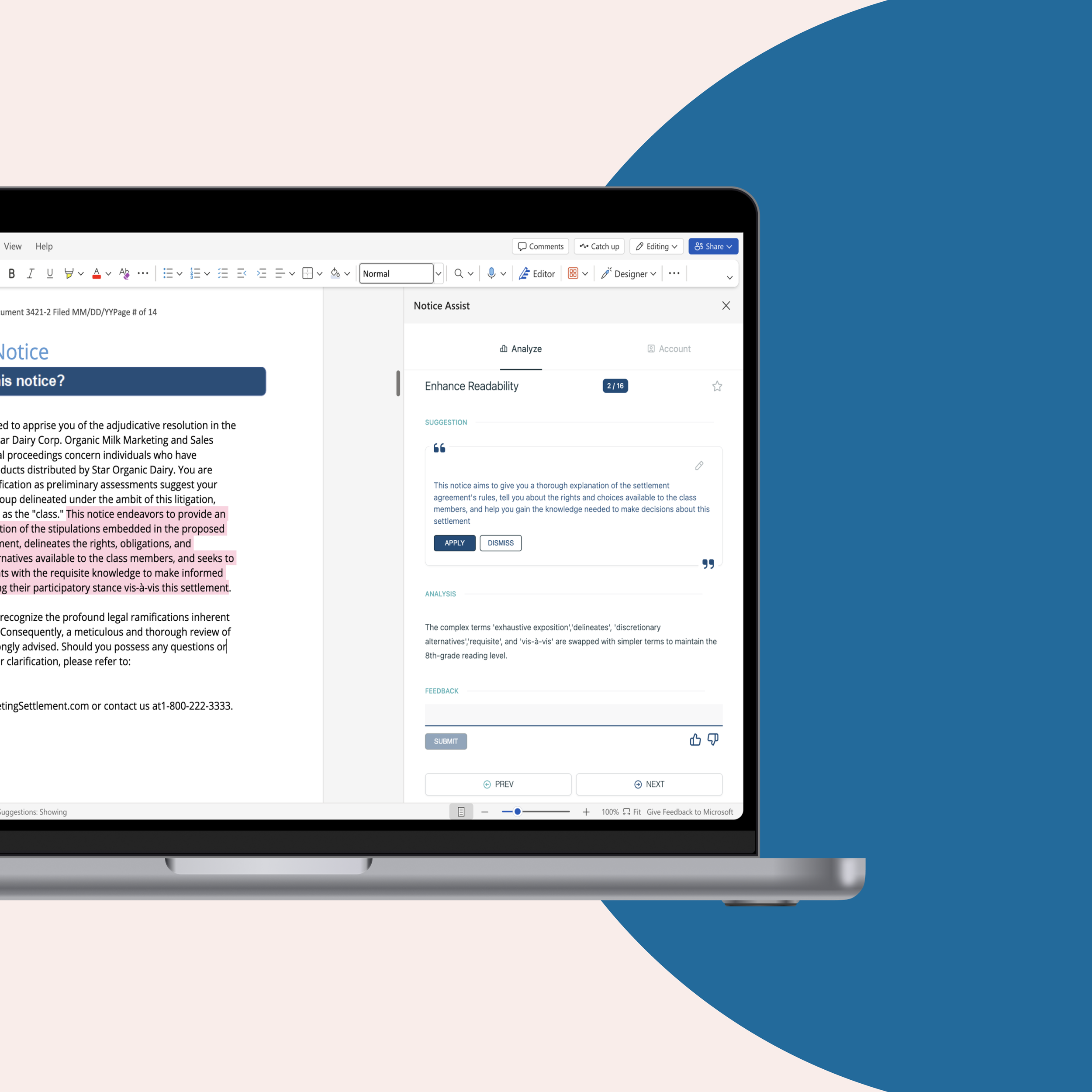Good Class Action Notice Boosts Participation and Results in Good Public Policy
Cameron Azari - Vice President of Epiq and Director of Hilsoft Notifications
While the value of class actions is a hot topic for some, what shouldn’t be a matter of debate is that once a class action is settled, there is only one objective – informing class members of their legal rights and, if class members can get money, clearly telling them how to get it. This is especially true in common fund settlements. It’s not only good for the settlement, its good public policy in general. Large pools of unclaimed money going to cy pres can make a settlement look bad and invites objections – the goal should always be how to ensure the maximum possible finds its way into the hands of the class members.
This may all seem obvious, but in practice this objective sometimes gets lost.
When class member data is known, individual notice must always be provided. In my experience, mailed notice typically generates a much higher claim rate than email notice (though individual cases can vary). Direct contact information (mail or email) should never be discarded for media no matter how targeted. It also is generally not a good idea to take physical addresses, search for corresponding emails, and then only use the found emails (discarding the physical addresses). When media notice is necessary, it must be carefully chosen so that it actually appears where class members can see it. Cheap online banner ads often are not delivered in the quantity promised or seen at all (often screened by adblockers or appearing below the portion of the website visible to the user). An experienced notice provider can guide settling parties and the court in choosing media that both has an adequate reach to the class and is geared to actually appear where class members will see them. Electronic notices should be carefully vetted to ensure compliance with obligations to ensure digital accessibility for people with disabilities.
Once the method for delivering notice is determined, then attention must be paid to the notice itself. Even the most attractive settlement will be scuttled if the notice cannot be read and understood easily. For mailed notice, email notice and media notice, the following tips are helpful:
· Postcard notices are a great way to deliver individual mailed notice, but optimally they should not be more than 450 words in length. More words could possibly fit, but only at an increased risk of readability. Focus should be placed on a short summary of the case, the right to opt out, object or hire counsel, and how to file a claim.
· Email notices can be very useful – especially when class members have provided an email to the defendant for the purposes of receiving communications. But an email notice should always be a summary, similar to a postcard. The text should not be so long as to require scrolling, and attachments should never be sent.
· People magazine is the No. 1 consumer magazine in the United States with a readership of more than 40 million. But if a notice is an impenetrable wall of small font text, buying ad space is like throwing money away. A one-third page ad in People should never exceed 500-550 words. An attractive headline should also be used that will make a casual reader want to read further.
In all notices, detail should be left to a Long Form (or Detailed) Notice and further explanatory information on a dedicated website. Regardless of the form, all parties to the settlement should look at all the notices exactly as they will appear, and make a good-faith assessment of how they will look to a reader. It is also always a good idea to retain an experienced notice expert to draft the notices in plain language and format them so they look good in their final form.
Regardless of the content of any settlement, when the deal is done, an obligation to the class has been created. A right to participate – or not – exists. People deserve and must be told about these rights in a way that they can understand and easily respond.
With more than 16 years of experience in the design and implementation of legal notification and claims administration programs, Cameron Azari, Vice President of Epiq and Director of Hilsoft Notifications, is a nationally recognized expert in the creation of compliant notification campaigns.
For more information, contact Cameron directly at cazari@epiqsystems.com, or visit the Epiq website for more information.
The Impact Fund is grateful to Epiq for its sponsorship of the 2017 Impact Fund Class Action Conference.












